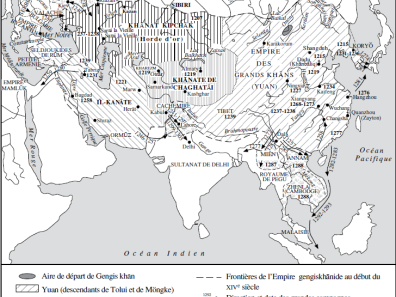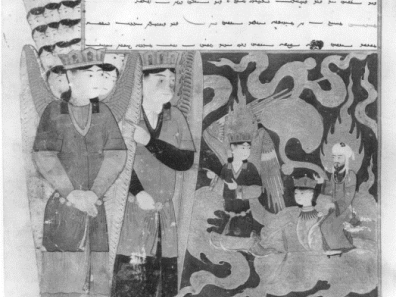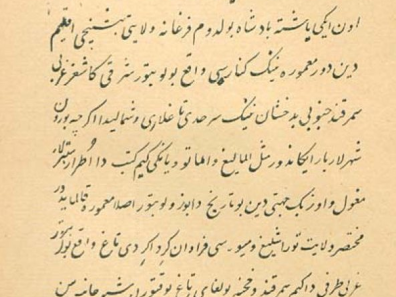Chaghatay: the acrolect of Central Asian and Russian Turks
Considered today by linguists to be the most prestigious of the various Turkic languages of Central Asia and Russia, Chaghatay has been an acrolect[1] for over half a millennium. From the 15th century onwards, it served not only as the official language of state, literature and diplomacy in the Turkic kingdoms of Central Asia and East Turkestan, but was also used by Muslims in European Russia until the mid-19th century, only to be definitively replaced in 1921 by an Uzbek language standardized according to the dialect of the cities.
History of the name Chaghatay
But let's go back to the origins. The history of this language, or at least that of its name, is closely linked to the great Mongol cavalcade that turned medieval Eurasia upside down. The term "Chaghatay" comes from the name of Genghis Khan's second son. In 1227, upon his father's death, Chaghatay Khan was granted a share of the Mongol empire, which included Transoxiana (a region roughly corresponding to the limits of present-day Uzbekistan, with the exception of Khorezm), the country known as the Seven Rivers (Yetisu in Turkish, and Semirechye in Russian), and East Turkestan, to which were later added Djungaria (to the north of Chinese Turkestan), as well as the regions of Kabul and Ghazni (today in Afghanistan).

When Tamerlane came to power in 1370, the epithet was applied to the Turkic or Turkicized nomads of Transoxania. However, authors rarely used this ethnonym to refer to their language of composition. They preferred the adjective turki, as opposed to farsi, as Persian remained the preferred medium of thought when writing, even among Turkish speakers. It was the orientalists of the 19th century who imposed and popularized the term "chaghatay", applying it first to the Timurid works they set out to inventory, and then to those of their successors.
Use of chaghatay in texts
As understood, it was thus in chaghatay that a whole hybrid collection of texts was composed over a vast territory by speakers of different varieties of Turkic. Since the end of the Middle Ages, they have more or less tried to focus on a specific model. From this point of view, the end of the Timurid period (second half of the 15th century) corresponds to the so-called "classical" period in the evolution of the language. At the court of Shahrukh, Tamerlane's heir, an account of the ascension of the Prophet Muhammad had been written in Eastern Turkic around 1436, and transcribed for the occasion in Uighur characters (chaghatay is usually written in the Arabic alphabet). This script, borrowed from Sogdian, was first used for Manichaean, Buddhist and Christian texts produced in Turkestan in the 8th and 9th centuries, then adopted by the Mongols. The Timurid work, superbly illustrated with sixty miniatures, is kept at the BNF.

The chaghatay, a vehicle for Turkish literature
But it was Mir Ali Chir Nawa'i (1441-1501) who gave the chaghatay its letters of nobility, forging a corpus in which virtually every genre of Persian literature found expression in Turkish. This veritable tour de force inspired Babur (1483-1530), Timurid prince of the Ferghana valley and founder of the Great Mughal dynasty in India, who also abandoned Persian to compose his memoirs in his mother tongue. The famous Baburnama or "Book of Babur", currently translated into almost thirty languages, is certainly the best-known specimen of Chaghatay literature.

János Eckmann (1905-1971), a Hungarian philologist who ended his career at the University of California, Los Angeles (UCLA) and whose grammar is still authoritative, compared the role of Chaghatay vis-à-vis the various Central Asian Turkic languages to that of Latin in the development of Romance languages.
Today, it is Uzbek and Uyghur that are closest to Chaghatay. A sign of the prestige still enjoyed by the ancient acrolect, both peoples claim this precious legacy as their own, calling it "ancient Uzbek" and "ancient Uyghur" respectively.
Marc Toutant
Research associate, Migrations et traductions team
Centre d'études turques, ottomanes, balkaniques et centrasiatiques (CETOBaC), CNRS
[1] Variety of a most prestigious language.